#top12 characters
Photo



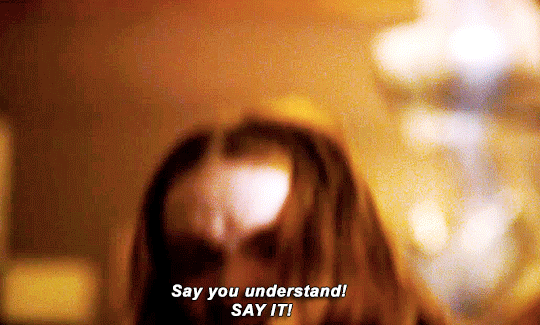




Top 12 Characters as Voted by Our Followers:
4. Max Mayfield
#bbelcher#stranger things#strangerthingsedit#dailystrangerthings#max mayfield#maxmayfieldedit#top12characters#our edits#by jessie#top12 characters
5K notes
·
View notes
Text
TOP 10 MALE CHARACTERS
Thanks for tagging me @roankomspacekru! I stuck with TV shows only, otherwise we'd be here all day 😂. Also, I did them unnamed to match my last Top 10 post (names in the tags).
Write your top 10 favorite male characters (each can be from different fandoms but not required) in no particular order •










I tagged a bunch of lovely folks out there, but of course if these lists aren't your cup of tea: no worries, + thanks for reading! 🍵
@ksefan9120, @xfrikdreina, @poppingpunksbubble, @twotimestom, @seriesaddicted, @spookycatqueen, @hisbumblebee, @bellarstydber, @yerastark, @cwsthe100
#top 10#male tv characters#yeah i cheated and put 11 again#give me an inch i take a mile#jamie fraser#bellamy blake#walter bishop#sylar#aka gabriel gray#chandler bing#rumplestilskin#angel#tuvok#luke & jess danes#peter & neal#okay so i cheated again and chose 12#give me and inch i'll take a mile#*top12#tumblr won't let me delete tags
15 notes
·
View notes
Video
그녀는 예뻤다! 역대 영화속 미모 여신 특집 (Top12 Beauty Female Characters in Movie History)
3 notes
·
View notes
Text
Fog strange talk Season 3 ——Jinjiang City 2020 Top12
(Language: English;Shooting: American group;Released in: USA, worldwide)
preface
The city was swept by high temperature, and there were two pairs of mandarin ducks, who migrated for a long time to build their nests and settle down in a warm place. One was unable to bear the high temperature and fell, dying on the concrete floor. One opened its wings to block the hot sun for his partner. The male struggled and died soon. It was a long way and a spare dream. The mandarin ducks did not eat or drink, and rested beside their husband.
Mandarin ducks are amorous, not to mention people in the city.
TOP12 hell
Sheng walked on the road, passers-by arranged just right.
They're doing their part on the street, pretending to be real people.
He enjoyed the reverence of the city of Jinjiang, like the murder of a rabbit, who knelt at his feet in terror.
When the broker finished reading Friday's copy, he sounded angry over the phone.
"What rubbish is it? Is it a haunted house adventure? Is it a one-man play? Is there beautiful language? What do you do at home every day? Think of going to a white bar to buy something special, or tracking where people get their food. I'm not asking you to write a play. I'm asking you to write a fantastic novel. Is this a novel about vampires? Why are there hunters? What effect does Wei Dongshuai have after all? After I read 20,000 words, I suddenly realized that this person is like a passer-by, so why did you create a character with a name in chapter 2? I could drag any man on the street and write a hundred times better than you."
Sheng calm tone said: "please don't be excited, time is very rushed, the third episode shooting to the release, it is only a few hours, I can not take care of the left and right. I hope you can calm yourself and not be so angry. We have plenty of time."
"I'm telling you, they don't think they have time. Your colleagues hate to rush things, it's too real, it's too intense, it's virtual, it's imaginative, it's not about putting the real world on TV. Everyone lives in the real world and does not need to be shown the real thing a second time. You don't need to construct the authenticity of a city, you just need to describe the curse of the city, why is the city cursed? What the hell is going on? People who don't matter, die, get killed, get eaten by vampires, to create a visual experience? Trust me, the first few episodes can shape the sensory experience, but the next one has to be really theme-based."
"What shall I do? There's not a lot going on in this city, the cars are too strange, just killing one or two people. A child fell, but there was not a trace of blood around him. Or a man jumps into a river, but he jumps on a board in the water. Don't you think it's funny to jump onto concrete? Am I writing an extended daily sketch book?"
"If you don't have a plot, you can walk with me, or you can go out and do your damn job and stop eating this mess. Now that you're poor and you don't have a penny to your name, there's someone you can contact to give you a little charity, but not for long. You need to think about your story. The first chapters are excellent because they all have a common theme: what kind of existence is the cursed Jinjiang City? After the plot began to have a relationship with people! But what is the connection to the city? I remind you again, what we want is not a photograph, what we want is the oil painting after artistic processing, artistic. What audiences want is an escape from the real world, otherwise why would they spend so much money on TV sets? What else would a TV station do? Why else would a network sign a cast? Why else would a network sign you up? If you are in the United States right now, the host of the television station has criticized some of the people on the air for you. I know, even if you're a writer, we all want to give the new season a completely different world, a completely different artistic atmosphere, which the audience will call wonderful incredible, but is it still difficult? I think there are difficulties."
"What should I do? My teeth have been yellowed and loosened by the poison of jinjiang city's neuroticism, and the poison has made my brain less flexible than before. Do you need me to sit by the manuscript and think for a whole day, but I can't write a word? It's like the script you wrote yesterday by a passer-by. It's really wonderful, but I don't know how many years he worked on it." Sheng retorted.
"Your arrogance disheartens me. Nobody cares if you've been poisoned, if you've been poisoned! I think they're going to write a new story where you end up being fed to the walking nonhumans in the graveyard. To be Harry in the video, I think you could be a madman in a horror movie, you could smash the bedroom door with an axe, you could meet two children with red tides behind them, and of course you could live in a palace with a maze outside. I think you're writing about the city, not the enigmatic haunted house of the first season."
"I think I will."
"You have a lot of story in your content, and you don't have to have dialogue to show that things happen and things exist, why don't you describe what happened, why don't you have characters who do what they do. I'm sure it would be wonderful to write about them doing these things. Will the whole world watch your monologue?"
"I need a little advice."
"Well, as a professional agent, LET me give you some professional advice. As a nocturnal creature, you either have to stop sleeping, or if you go crazy, the characters in the story will go crazy too. People like to see crazy creatures. Art has its uniqueness, when you delete your manuscript, there should be no similar content in the future. The artist created a completely different artistic atmosphere, the beggar in the TV series, she used to be a nice woman in the second season. Why does he look at his words in the new TV series and think they are very attractive, but no one buys them? Because they are similar. Because she's not really an artist. In addition to the sausage in the factory, people will buy it constantly, those pictures like photos can be done by the photocopier, a larger piece of paper, some wood on the frame can be worth a few dollars. Tell me, what's your favorite description?"
"I love to describe what happened."
"Yes, when you spice things up and use your skills for twenty years, things become art, and you're always unique, because you're never going to write another book that looks exactly like the one before. You're influenced by the cast, they don't want the script, they want the audience. They're not looking for a laundry list of how Harry and his wife fell in love? They want to know, in another country, a legendary writer, who he really is? How shameless! How filthy he really is. What did his heart long for? What circumstances shaped such a writer? Americans want to see hell, please make hell on earth. You've been to hell, you've written 33 Days in Hell, and you can't even be calm to fully describe the reality of hell. It's all too real."
"I think I have already understood how to think and create the following plot. Maybe the characters in the plot are not important, but what kind of story is important. I want to express the abnormality of this city and the abandonment of God through language dialogue."
"If you're talking about stories, I'm sure your sad little city doesn't have enough stories for you to write about. Harry's wife can't die because she was an angel. '
#American Horror Story season 10 remake serialized#Chinese horror story#Fog strange talk Season 3 ——Jinjiang City 2020#American Horror Story#writing
0 notes
Text
How a Bunch of Dreamers Turned Texas a Shade of Pink
New Post has been published on http://web-hosting-top12.com/2018/11/20/how-a-bunch-of-dreamers-turned-texas-a-shade-of-pink/
How a Bunch of Dreamers Turned Texas a Shade of Pink


This past Labor Day weekend, I ventured to central Texas to learn if Texas, the red foil to blue California, could be turned Democratic by Silicon Valley technologists taking a newfound interest in US elections.
The US Senate contest between Ted Cruz and Beto O’Rourke drew the bulk of the headlines, but the action was further down the ballot, and offered intriguing hints of a stalwart red state inching into battleground territory.
First, let’s catch up with some of the characters from our earlier story. Tech for Campaigns, a San Francisco nonprofit that focuses on state legislative elections, deployed several thousand Silicon Valley volunteers across America. They won all the Texas legislative races they targeted (eight flipped, and one defended), a big validation of their tech meets down-ballot candidate strategy. The MapTheVote app developed in conjunction with Texas Democrats to register voters will be deployed elsewhere in the country in future elections. The group now counts nearly 10,000 volunteers, up from 4,500 in July.
Vote.org, which had been focusing on registering Texans before the midterms, deployed an innovative and controversial online registration strategy, allowing Texans to fax in voter registration forms via Vote.org’s website. In my previous piece, I’d reported about the various mailing and envelope-stuffing hacks that Register2Vote, another voter registration organization, had used to streamline a very clunky and analog registration process. The two organizations teamed up, and together faxed in more than 2,000 completely electronic applications to various Texas counties before the Texas secretary of state halted the effort. The challenge came down to one word in the Texas Election Code: “copy.” The code requires any faxed form to have an accompanying “copy” mailed in within four days. Vote.org took that to mean a printed version of its online form; the secretary of state says it means an ink-on-paper original (a rather novel interpretation of “copy”). An effort to give Texans fully online voter registration is stalled. “I think we all want the same thing, which is online voter registration. Hatred of paperwork is bipartisan,” said Vote.org’s founder, Debra Weaver.
Buoyed by such efforts, turnout for the midterms in Texas was historic—8.3 million voters out of 15.8 million registered showed up, a turnout rate of 52 percent. That almost equaled the 9 million Texans who voted in the 2016 presidential election, and nearly doubled the 4.7 million voters who showed up in the last midterm. Texans, by and large, came out.
Voters showed up, but then hit the gerrymandered wall, particularly in races for the US House of Representatives. The results from the central Texas districts around Austin are a case study. In the 21st district, where I rode shotgun with Democrat Joseph Kopser’s campaign, the huge swath of Hill Country went reliably red, diluting the urban blue of parts of Austin and San Antonio. In a district that Trump won by 10 percentage points in 2016, Kopser lost to Republican Chip Roy by a much narrower margin—less than 3 percentage points. Next door, in the 35th district, which was designed as a concession to the Democrats, Lloyd Doggett won by a massive 45 percentage points (as he’s won since 2012 when the district was created).
Texas’s congressional districts are particularly gerrymandered in the Austin region, which is carved into parts of six districts.
govtrack
Together, the two districts are examples of the “crack and pack” strategy of the gerrymanderer: Put as many opposing voters as possible into favorable districts that your side is engineered to win by a decent, but not overwhelming margin (the “crack”). And then pack as many hostile voters into districts you’ll concede, while consuming as few of your voters as possible (the “pack”).
The systemic impact of gerrymandering is visible in the total popular vote for House seats in Texas. According to the secretary of state’s data, GOP candidates won 4,116,757 votes to the Democrats’ 3,827,345, or about 52 percent of the total vote. But Republicans captured 22 of Texas’s 36 House seats, about 61 percent. Nationally, Democrats won 55.2 million votes, or about 51.9 percent of the popular vote, and 232 of the 431 seats that have been decided, or 54 percent. (Four seats remain undecided.) So Texas was a national outlier.
Looking at the discrepancy between Texas’s popular vote and the House seats, the gerrymanderer’s strategy seems impregnable. But there’s one flaw: It’s a “fire and forget” strategy whose demographic calculus is set at the beginning of the 10-year census cycle. In a state like Texas that’s seen large inflows from other states due to a booming economy, the subtle balance struck in redistricting starts to break down around now, just before the next census. That’s why, while only two districts on the “red to blue” flip list actually went blue, others ended up much closer than predicted. And herein lies the problem with “crack and pack:” Once your favorable “cracked” districts designed for narrow margins of victory start flipping, they can all flip at once like dominoes, while the districts “packed” with your opponents remain hopeless. Democrats have one more chance in 2020 to overwhelm the 2010 redistricting with demographic changes and voter outreach.
More strategically, and more impactful in terms of post-2020 redistricting, Texas Democrats did pretty well in the state legislature. In the Texas House, Democrats flipped 12 seats, to bring the party balance to 83 to 67 in favor of the GOP (76 seats are required for a majority). The Texas House has to approve any redistricting plan (read: future gerrymandering), so winning the Legislature is really winning 10 years of the House vote. With a few more seats, a suddenly beefed-up Democratic presence in the Texas House means the party can influence the eventual election of a new speaker, as well as a new map. Almost certainly, this will be another heavily contested battleground in 2020.
Lastly, what of our main character, Jeremy Smith, who diligently worked for both Register2Vote and for the Kopser campaign, and whom we last saw canvassing in an Austin suburb? After the Kopser campaign’s defeat, Smith spent some time helping to close up shop and disband the team. But he is wasting no time after the midterms. “Campaigning for the 2019 elections has already started, and everyone is finding the next campaign to work on,” he told me enthusiastically. (Three states have governor’s races in 2019.) In politics there’s always another battle to fight.
More Great WIRED Stories
0 notes
Text
How a Bunch of Dreamers Turned Texas a Shade of Pink
New Post has been published on http://web-hosting-top12.com/2018/11/20/how-a-bunch-of-dreamers-turned-texas-a-shade-of-pink/
How a Bunch of Dreamers Turned Texas a Shade of Pink


This past Labor Day weekend, I ventured to central Texas to learn if Texas, the red foil to blue California, could be turned Democratic by Silicon Valley technologists taking a newfound interest in US elections.
The US Senate contest between Ted Cruz and Beto O’Rourke drew the bulk of the headlines, but the action was further down the ballot, and offered intriguing hints of a stalwart red state inching into battleground territory.
First, let’s catch up with some of the characters from our earlier story. Tech for Campaigns, a San Francisco nonprofit that focuses on state legislative elections, deployed several thousand Silicon Valley volunteers across America. They won all the Texas legislative races they targeted (eight flipped, and one defended), a big validation of their tech meets down-ballot candidate strategy. The MapTheVote app developed in conjunction with Texas Democrats to register voters will be deployed elsewhere in the country in future elections. The group now counts nearly 10,000 volunteers, up from 4,500 in July.
Vote.org, which had been focusing on registering Texans before the midterms, deployed an innovative and controversial online registration strategy, allowing Texans to fax in voter registration forms via Vote.org’s website. In my previous piece, I’d reported about the various mailing and envelope-stuffing hacks that Register2Vote, another voter registration organization, had used to streamline a very clunky and analog registration process. The two organizations teamed up, and together faxed in more than 2,000 completely electronic applications to various Texas counties before the Texas secretary of state halted the effort. The challenge came down to one word in the Texas Election Code: “copy.” The code requires any faxed form to have an accompanying “copy” mailed in within four days. Vote.org took that to mean a printed version of its online form; the secretary of state says it means an ink-on-paper original (a rather novel interpretation of “copy”). An effort to give Texans fully online voter registration is stalled. “I think we all want the same thing, which is online voter registration. Hatred of paperwork is bipartisan,” said Vote.org’s founder, Debra Weaver.
Buoyed by such efforts, turnout for the midterms in Texas was historic—8.3 million voters out of 15.8 million registered showed up, a turnout rate of 52 percent. That almost equaled the 9 million Texans who voted in the 2016 presidential election, and nearly doubled the 4.7 million voters who showed up in the last midterm. Texans, by and large, came out.
Voters showed up, but then hit the gerrymandered wall, particularly in races for the US House of Representatives. The results from the central Texas districts around Austin are a case study. In the 21st district, where I rode shotgun with Democrat Joseph Kopser’s campaign, the huge swath of Hill Country went reliably red, diluting the urban blue of parts of Austin and San Antonio. In a district that Trump won by 10 percentage points in 2016, Kopser lost to Republican Chip Roy by a much narrower margin—less than 3 percentage points. Next door, in the 35th district, which was designed as a concession to the Democrats, Lloyd Doggett won by a massive 45 percentage points (as he’s won since 2012 when the district was created).
Texas’s congressional districts are particularly gerrymandered in the Austin region, which is carved into parts of six districts.
govtrack
Together, the two districts are examples of the “crack and pack” strategy of the gerrymanderer: Put as many opposing voters as possible into favorable districts that your side is engineered to win by a decent, but not overwhelming margin (the “crack”). And then pack as many hostile voters into districts you’ll concede, while consuming as few of your voters as possible (the “pack”).
The systemic impact of gerrymandering is visible in the total popular vote for House seats in Texas. According to the secretary of state’s data, GOP candidates won 4,116,757 votes to the Democrats’ 3,827,345, or about 52 percent of the total vote. But Republicans captured 22 of Texas’s 36 House seats, about 61 percent. Nationally, Democrats won 55.2 million votes, or about 51.9 percent of the popular vote, and 232 of the 431 seats that have been decided, or 54 percent. (Four seats remain undecided.) So Texas was a national outlier.
Looking at the discrepancy between Texas’s popular vote and the House seats, the gerrymanderer’s strategy seems impregnable. But there’s one flaw: It’s a “fire and forget” strategy whose demographic calculus is set at the beginning of the 10-year census cycle. In a state like Texas that’s seen large inflows from other states due to a booming economy, the subtle balance struck in redistricting starts to break down around now, just before the next census. That’s why, while only two districts on the “red to blue” flip list actually went blue, others ended up much closer than predicted. And herein lies the problem with “crack and pack:” Once your favorable “cracked” districts designed for narrow margins of victory start flipping, they can all flip at once like dominoes, while the districts “packed” with your opponents remain hopeless. Democrats have one more chance in 2020 to overwhelm the 2010 redistricting with demographic changes and voter outreach.
More strategically, and more impactful in terms of post-2020 redistricting, Texas Democrats did pretty well in the state legislature. In the Texas House, Democrats flipped 12 seats, to bring the party balance to 83 to 67 in favor of the GOP (76 seats are required for a majority). The Texas House has to approve any redistricting plan (read: future gerrymandering), so winning the Legislature is really winning 10 years of the House vote. With a few more seats, a suddenly beefed-up Democratic presence in the Texas House means the party can influence the eventual election of a new speaker, as well as a new map. Almost certainly, this will be another heavily contested battleground in 2020.
Lastly, what of our main character, Jeremy Smith, who diligently worked for both Register2Vote and for the Kopser campaign, and whom we last saw canvassing in an Austin suburb? After the Kopser campaign’s defeat, Smith spent some time helping to close up shop and disband the team. But he is wasting no time after the midterms. “Campaigning for the 2019 elections has already started, and everyone is finding the next campaign to work on,” he told me enthusiastically. (Three states have governor’s races in 2019.) In politics there’s always another battle to fight.
More Great WIRED Stories
0 notes
Photo





Top 12 Characters as Voted by Our Followers:
2. Robin Buckley
#userava#tusersoph#usergeo#userluce#userbeccs#userkenny#strangerthingsedit#robinbuckleyedit#robin buckley#stranger things#usermaggs#tuserdee#userjessie#dailystrangerthings#strangerthingscentral#top12 characters#our edits#by tix#love of my life!!!!!!!!!!!!!!!1#the colouring of the last one.. let's not talk about it
4K notes
·
View notes
Photo




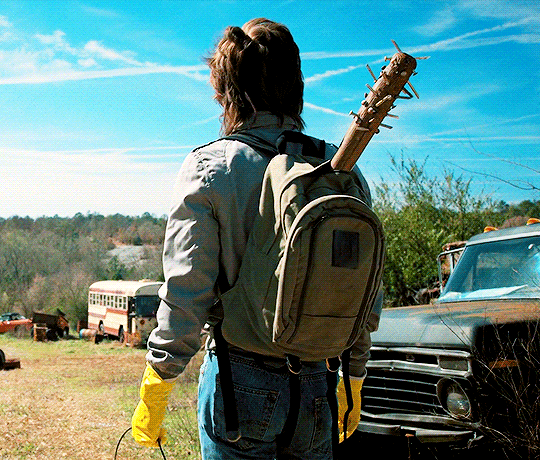

Top 12 Characters as Voted by Our Followers:
1. Steve Harrington
#stranger things#strangerthingsedit#dailystrangerthings#strangerthingscentral#dailyharrington#steve harrington#userava#usertix#tusersoph#userkenny#userstream#bbelcher#filmtv#cinemapix#top12 characters#our edits#by lucy
3K notes
·
View notes
Photo




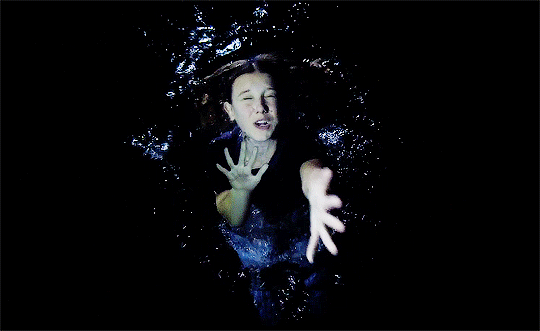


Top 12 Characters as Voted by Our Followers
3. El Hopper "I can fight."
#stranger things#strangerthingsedit#bbelcher#chewieblog#userstream#useroptional#usersource#televisionblog#tvcentric#cinemapix#tvandfilm#userjessie#userreeshika#tusersoph#mikesmom#userkyy#ericasinclairs#tuserlucia#lorelaigilmo#top12 characters#our edits#by vanessa
2K notes
·
View notes
Photo
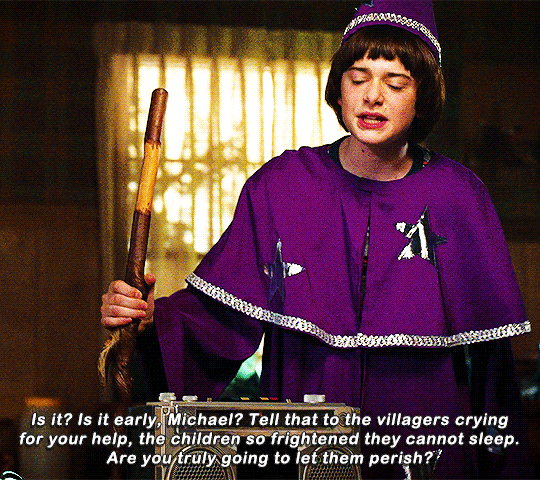




Top 12 Characters as Voted by Our Followers:
5. Will Byers
#strangerthingsedit#tusersoph#userava#usermaggs#userbeccs#userkenny#will byers#stranger things#dailystrangerthings#strangerthingscentral#top12 characters#our edits#by tix#flashing gif
2K notes
·
View notes
Photo






Top 12 Characters as Voted by Our Followers:
7. Joyce Byers
#strangerthingsedit#dailystrangerthings#strangersource#stranger things#joyce byers#mikesmom#usergeo#userluce#userava#usertix#userkenny#userkaisa#ericasinclairs#userjessie#nessa007#usersarahh#palmviolet#our edits#by soph#top12 characters
2K notes
·
View notes
Photo








Top 12 Characters as Voted by Our Followers:
10. Nancy Wheeler
#stranger things#strangerthingsedit#dailystrangerthings#strangersource#strangerthingscentral#tusersoph#userjessie#userdiana#usertix#nancy wheeler#our edits#by kenny#top12 characters
1K notes
·
View notes
Photo




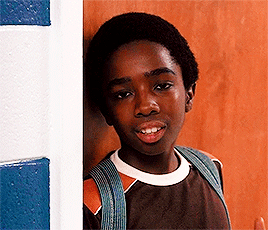
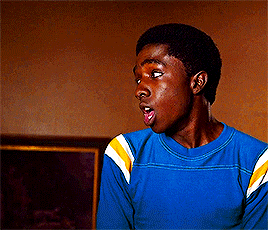
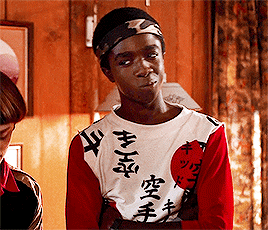

Top 12 Characters as Voted by Our Followers:
8. Lucas Sinclair
#stedit#strangerthingsedit#stranger things#dailystrangerthings#strangerthingscentral#tvstrangerthings#stranger things edit#lucas sinclair#lucas sinclair edit#dustinhendrsn#ericasinclairs#tuserjazz#tusersoph#userelhoppers#usertix#taggingkathryn#our edits#by kaisa#top12 characters
896 notes
·
View notes
Photo





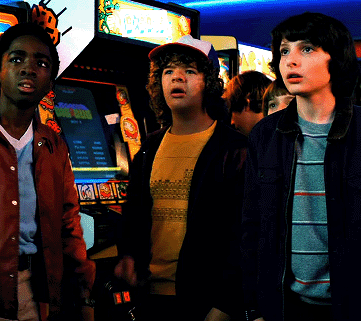


Top 12 Characters as Voted by Our Followers:
9. Dustin Henderson
#stranger things#strangerthingsedit#dailystrangerthings#strangersource#strangerthingscentral#tusersoph#userjessie#mikesmom#userdiana#usergeo#usertix#our edits#by kenny#dustin henderson#top12 characters
706 notes
·
View notes
Photo








Top 12 Characters as Voted by Our Followers:
11. Jim Hopper
#dailystrangerthings#strangerthingsedit#stedit#strangersource#strangerthingsedits#strangerthingscentral#jimhopperedit#jim hopper#filmtv#usersource#userstream#stranger things#our edits#by laura#top12 characters
619 notes
·
View notes
Photo

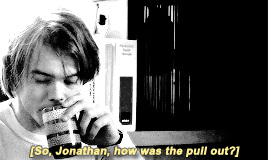







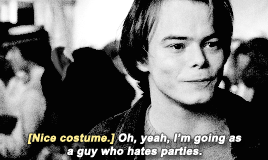
Top 12 Characters as Voted by Our Followers:
12. Jonathan Byers
#dailystrangerthings#strangerthingsedits#stedit#strangerthingsedit#jonathanbyersedit#userjonathan#userava#jonathan byers#stranger things#s1#s2#s3#our edits#by megan#top12 characters
565 notes
·
View notes